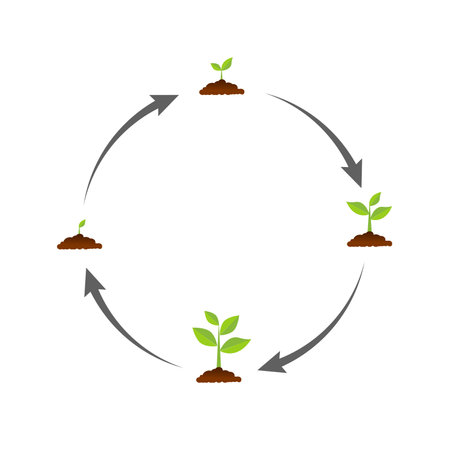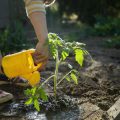Understanding Water Usage in British Gardens
To embark on a journey towards sustainable water conservation in British gardens, its essential to first understand how water is typically used across the UK’s green spaces. Unlike regions with predictable climates, the UK’s weather is famously changeable, ranging from prolonged rainy spells to unexpected dry periods, particularly during summer months. This unpredictability directly influences garden watering habits and can create confusion about how much water is truly needed for healthy plant growth.
Recent studies suggest that an average British household uses between 30% to 50% of its domestic water outdoors during peak gardening season, with much of this allocated to lawns, borders, and container plants. Traditional practices often involve the use of hosepipes or sprinklers, which, while convenient, can be highly inefficient—particularly when used during midday heat or on already saturated soil.
The challenge becomes more pronounced when local councils impose hosepipe bans in response to drought conditions or low reservoir levels. These restrictions are increasingly common as climate change exacerbates both droughts and flooding across the UK. For gardeners, adapting to these bans requires a shift in mindset: moving away from routine watering schedules and towards a more responsive approach based on actual plant needs and soil moisture levels.
Understanding these consumption patterns—and the pressures placed upon them by both weather and regulation—is the foundation for developing effective and sustainable water conservation strategies tailored specifically to British gardens.
2. Native Plant Selection for Efficient Water Management
Choosing the right plants is fundamental to sustainable water conservation in British gardens. Opting for native and drought-tolerant species, which are naturally adapted to the UK’s varied climate and soil conditions, reduces the need for supplementary irrigation and helps maintain garden vitality throughout the year.
Benefits of Native and Drought-Tolerant Plants
- Reduced Water Usage: Native plants are accustomed to local rainfall patterns, requiring less frequent watering once established.
- Enhanced Resilience: These plants are better equipped to withstand dry spells and fluctuating weather typical of British summers.
- Support for Local Wildlife: Many native species provide habitat and food sources for pollinators, birds, and beneficial insects.
- Lower Maintenance: Adapted to local pests and diseases, native plants generally demand fewer chemical interventions.
Popular Native & Drought-Tolerant Plants for UK Gardens
| Plant Name | Type | Main Features |
|---|---|---|
| Lavandula angustifolia (English Lavender) | Shrub | Aromatic, attracts pollinators, thrives in well-drained soil |
| Achillea millefolium (Yarrow) | Perennial | Drought-resistant, good groundcover, supports insects |
| Geranium pratense (Meadow Crane’s-bill) | Herbaceous perennial | Tolerates a range of soils, colourful blooms, wildlife-friendly |
| Sedum spectabile (Ice Plant) | Succulent perennial | Tolerates poor soils, late summer flowering, attracts bees |
Tips for Successful Establishment
- Select plants suited to your specific soil type—whether clay, loam or sandy—for optimal performance.
- Group plants with similar water needs together to maximise efficiency and simplify maintenance routines.
- Add organic mulch around plant bases to retain moisture and suppress weeds.
Cultural Considerations
Bearing in mind the British tendency towards unpredictable rainfall, integrating native and drought-tolerant species not only ensures sustainable water usage but also aligns your gardening practices with traditional cottage garden aesthetics. Over time, this approach fosters a robust and resource-efficient landscape that can be enjoyed through every season.
![]()
3. Rainwater Harvesting and Greywater Systems
Embracing rainwater harvesting and greywater systems is a practical step for British gardeners looking to reduce their reliance on mains water. The UK climate, with its regular rainfall, provides an excellent opportunity to collect and reuse water efficiently. By implementing these methods, you not only conserve valuable resources but also reduce water bills and help your garden thrive during drier spells.
Rainwater Collection Techniques
The most straightforward method of rainwater harvesting is installing water butts beneath downpipes from your home, shed, or greenhouse. Opt for food-grade containers and ensure they are fitted with a secure lid to prevent debris and mosquitoes from entering. Positioning multiple water butts around your property can maximise collection capacity, especially in larger gardens. Linking several barrels together using simple connector kits allows you to store more water without taking up excessive space.
Using Collected Rainwater Effectively
Rainwater is naturally soft and ideal for irrigating beds, borders, pots, and even lawns. Use a watering can or connect a drip irrigation system directly to your water butt for efficient distribution. Always prioritise watering early in the morning or late in the evening to minimise evaporation—an essential tip during unpredictable British summers.
Greywater Reuse in the Garden
Greywater refers to gently used household water from baths, showers, or washing up (excluding toilet waste). With careful management, this resource can supplement your garden’s needs, especially during hosepipe bans or dry periods. Ensure that only biodegradable, environmentally friendly soaps are used if you plan to divert greywater onto ornamental beds or lawns. Avoid using greywater on edible crops unless it has been treated properly.
Safe Greywater Practices
Install a basic diverter system to channel bath or sink water directly into outdoor storage tanks or use buckets to collect water manually. Never store untreated greywater for more than 24 hours to prevent odours and bacterial growth. Rotate where you apply greywater in your garden to avoid soil build-up of detergents or salts over time.
Local Considerations for British Households
Before installing any permanent rainwater or greywater system, check with your local council regarding regulations or incentives for sustainable water use. Many regions encourage such practices and may offer grants or advice tailored to local conditions. By making the most of rainwater and safely reusing household water, British gardeners can play a significant role in conserving one of our most precious natural resources.
4. Soil Improvement and Mulching Methods
One of the most effective ways to bolster water conservation in British gardens is through thoughtful soil enhancement and mulching strategies. These approaches not only help retain precious moisture but also reduce the rate of evapotranspiration—ensuring your garden thrives even during drier spells.
Choosing the Right Soil Amendments
British soils can vary greatly, from heavy clays to free-draining sands, and each requires tailored improvement techniques for optimal water retention. Incorporating organic matter such as well-rotted compost or leaf mould will improve structure, increase water-holding capacity, and encourage beneficial microbial activity. For clay soils, coarse grit or sharp sand can boost drainage while still allowing moisture to linger near roots. For sandy soils, richer organic matter helps hold onto water that would otherwise drain away.
Recommended Soil Enhancers
| Soil Type | Recommended Amendment | Water Conservation Benefit |
|---|---|---|
| Clay | Sharp Sand, Organic Compost | Improves drainage while retaining moisture |
| Sandy | Leaf Mould, Well-Rotted Manure | Binds soil particles and enhances water retention |
| Loam | General Purpose Compost | Boosts structure and maintains balanced moisture levels |
The Importance of Mulching
Mulching is a tried-and-true technique across the UK for conserving soil moisture. By applying a layer of organic mulch—such as bark chips, straw, wood shavings, or grass clippings—gardeners can suppress weeds, insulate plant roots from temperature extremes, and dramatically reduce water evaporation from the soil surface.
Popular Mulching Materials in Britain
| Mulch Type | Best Use Case | Water Conservation Effectiveness |
|---|---|---|
| Bark Chips | Shrub Borders & Pathways | High – Lasts long, suppresses weeds effectively |
| Straw/Hay | Vegetable Patches & Allotments | Moderate – Breaks down quickly, adds nutrients over time |
| Composted Leaves (Leaf Mould) | Perenial Beds & Woodland Gardens | High – Excellent for moisture retention and soil enrichment |
| Grass Clippings (thin layers) | Lawn Edges & Fast-growing Crops | Low/Moderate – Rapid decomposition, avoid thick layers to prevent matting |
Tried-and-Tested Tips for British Conditions:
- Apply mulch in late spring when the soil is still moist to lock in water before summer heat arrives.
- Aim for a 5–8 cm thick mulch layer; thinner layers dry out too quickly while thicker ones may impede rainfall penetration.
- Avoid piling mulch against plant stems to prevent rot or pest problems.
Clever use of soil improvement and mulching can make all the difference in creating a sustainable British garden that flourishes with less irrigation—saving both water and effort throughout the gardening season.
5. Water-Efficient Irrigation Solutions
When it comes to conserving water in British gardens, rethinking how you irrigate is crucial. Traditional hose watering often results in significant water loss through evaporation and runoff, especially during the unpredictable weather patterns typical of the UK. To foster a more sustainable approach, consider adopting modern, water-efficient irrigation solutions specifically suited to local conditions.
Assessing Alternatives: Drip Irrigation Systems
Drip irrigation stands out as an efficient replacement for standard hoses. By delivering water directly to the root zones of plants at a slow and steady rate, drip systems minimise waste and promote healthy growth. For UK gardens, where rainfall can be sporadic but heavy, these systems prevent overwatering and help maintain consistent soil moisture levels. Many drip kits are now designed for DIY installation and can be tailored to suit everything from compact city plots to expansive country gardens.
Benefits Over Traditional Hose Watering
Compared to using a hose or sprinkler, drip irrigation uses up to 50% less water, reducing both your environmental impact and your utility bills. It also mitigates common issues like leaf scorch and fungal diseases caused by wet foliage—problems that are exacerbated by the UKs damp climate.
Time-of-Day Best Practices
The timing of watering is equally important for efficiency. In the UK, early morning is generally the best time to irrigate, as cooler temperatures and lower wind speeds mean less evaporation occurs. Evening watering is less ideal due to prolonged leaf wetness overnight, which can encourage moulds and mildews prevalent in British gardens. Consider pairing automated timers with your irrigation system to ensure consistency without the need for daily manual intervention.
Smart Technology Integration
For those keen on tech-savvy solutions, smart controllers now allow you to sync your irrigation schedule with local weather forecasts, further reducing unnecessary water use during rainy spells—a frequent occurrence across much of the UK. These devices can be managed via smartphone apps, offering convenience and precise control at your fingertips.
By moving away from traditional hose watering and embracing efficient alternatives tailored to British conditions, gardeners can significantly cut down on water consumption while ensuring their gardens remain lush, healthy, and sustainable for years to come.
6. Community and Policy Initiatives
When it comes to sustainable water conservation in British gardens, individual efforts are crucial, but broader community and policy initiatives provide the essential backbone for long-term success. Across the UK, local councils have introduced a range of schemes designed to support residents in reducing their water footprint. Many councils offer subsidised water butts, encourage the installation of permeable paving, and provide educational resources on drought-resistant planting. These programmes not only make it easier for gardeners to adopt eco-friendly practices, but they also foster a sense of collective responsibility.
Community gardens play a pivotal role as well. These shared spaces often serve as practical demonstrations of water-wise gardening, from mulching techniques to rainwater harvesting systems. By pooling resources and knowledge, community gardeners can experiment with innovative solutions such as greywater recycling or communal composting—methods that may be more challenging for individuals to implement alone. Furthermore, these gardens act as hubs for workshops and events, spreading awareness about sustainable horticulture throughout neighbourhoods.
On a national scale, organisations like the Royal Horticultural Society (RHS) and Waterwise champion best practices in garden water management. The RHS’s campaigns promote drought-tolerant plant choices suited to British conditions, while Waterwise collaborates with utilities and policymakers to shape regulations that encourage smarter water use both at home and in public spaces. Government-backed initiatives such as the Environment Agency’s water efficiency guidance also set benchmarks for responsible gardening across the country.
Together, these local and national efforts create an environment where sustainable water use becomes part of the cultural fabric of British horticulture. Whether you’re joining a council scheme, volunteering at a community garden, or following guidance from trusted institutions, every action contributes to a more resilient and resource-conscious gardening community.


